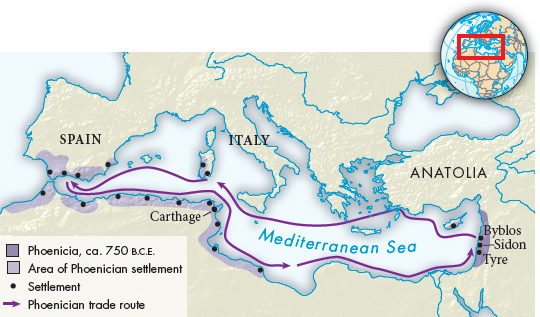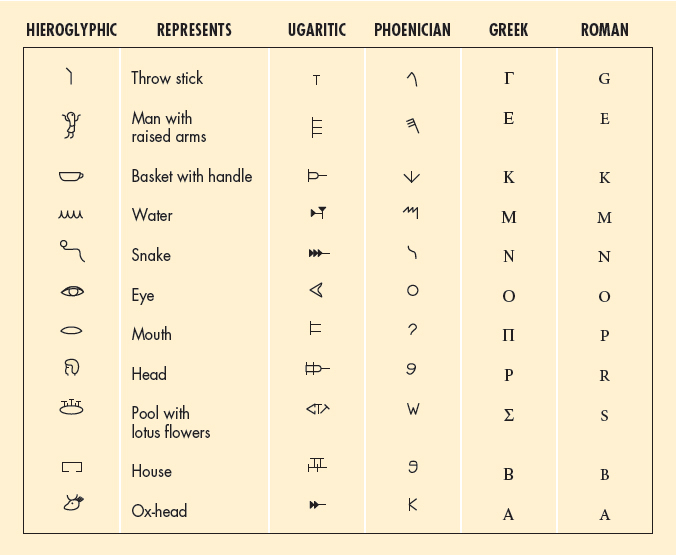Understanding World Societies:
Printed Page 48
The Emergence of New States
The Bronze Age Collapse was a time of massive political and economic disruption, but it was also a period of the spread of new technologies, especially iron. The Iron Age began in about 1100 B.C.E. Iron weapons became important items of trade around the Mediterranean and throughout the Tigris and Euphrates Valleys, and the technology for making them traveled as well.
The decline of Egypt allowed new powers to emerge. South of Egypt along the Nile was a region called Nubia, which as early as 2000 B.C.E. served as a conduit of trade through which a variety of products flowed north from sub-
With the contraction of the Egyptian empire, an independent kingdom, Kush, rose to power in Nubia, with its capital at Napata in what is now Sudan. The Kushites conquered southern Egypt, and in 727 B.C.E. the Kushite king Piye (r. ca. 747–
While Kush expanded in the southern Nile Valley, another group rose to prominence along the Mediterranean coast of modern Lebanon. These people established the prosperous commercial centers of Tyre, Sidon, and Byblos. These peoples were master shipbuilders, and from about 1100 B.C.E. to 700 B.C.E. many of the residents of these cities became the seaborne merchants of the Mediterranean. Their most valued products were purple and blue textiles, from which originated their Greek name, Phoenicians, meaning “Purple People.”
> Phoenician Trade Goods:
- Dyed textiles
- Bronze
- Iron
- Wine
- Hunting dogs
- Gold
- Ivory

The variety and quality of the Phoenicians’ trade goods generally made them welcome visitors. They established colonies and trading posts throughout the Mediterranean and as far west as the Atlantic coast of modern-
The Phoenicians’ overwhelming cultural achievement was the spread of a completely phonetic system of writing — that is, an alphabet (see Figure 2.2). Writers of cuneiform and hieroglyphics had developed signs that were used to represent sounds, but these were always used with a much larger number of ideograms. Sometime around 1800 B.C.E., workers in the Sinai Peninsula, which was under Egyptian control, began to use only phonetic signs to write, with each sign designating one sound. The Greeks modified this alphabet for their own language, and the Romans later based their alphabet — the script we use to write English today — on Greek. Alphabets based on the Phoenician alphabet were also created in the Persian Empire and formed the basis of Hebrew, Arabic, and various alphabets of South and Central Asia.

List of hieroglyphic, Ugaritic, Phoenician, Greek, and Roman sign forms. (Source: A. B. Knapp, The History and Culture of Ancient Western Asia and Egypt. © 1988 Wadsworth, a division of Cengage Learning, Inc. Reproduced by permission, www.cengage.com/permissions.)
>QUICK REVIEW
How did the Nile shape the society and culture of ancient Egypt?